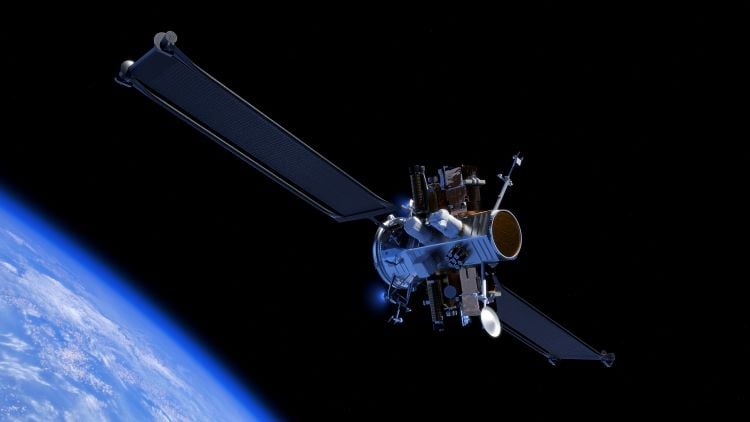The Jeff Bezos-founded aerospace company, Blue Origin, recently announced its new and upcoming Swiss army knife-style spacecraft platform, Blue Ring, which comes after very little public discussion by Blue Origin regarding this project. For example, a January 2023 story broke when Blue Origin briefly announced a job posting for "Blue Ring Senior Program Manager" on its "Careers" page, but the job was pulled less than 24 hours later. Overall, Blue Origin has been quite mum about Blue Ring.
While the most recent announcement was brief, it conveyed how the goal of Blue Ring will be to provide a multitude of services, including logistics, refueling, and transportation, and is slated to be part of a new Blue Origin business unit called In-Space Systems. It is estimated that Blue Ring could carry payloads greater than 3,000 kilograms (6,600 pounds) and capable of being flexible for both delta-V (change in velocity) and mission priorities. This means Blue Ring holds the potential to operate anywhere from medium Earth orbit, cislunar space (the region between Earth's geostationary orbit and the Moon's orbit), and beyond.
"Blue Ring addresses two of the most difficult challenges in spaceflight today: growing space infrastructure and increasing mobility on-orbit," Paul Ebertz, who is the Senior Vice President of Blue Origin's In-Space Systems, said in the official statement. "We're offering our customers the ability to easily access and maneuver through a variety of orbits cost-effectively while having access to critical data to ensure a successful mission."
Blue Origin also suggested that Blue Ring's size would allow it to be flown on current rockets, including Vulcan, Falcon 9, and Falcon Heavy, along with Blue Origin's upcoming New Glenn rocket, as well. The lifespan for Blue Ring is also estimated to be approximately five years, with the first launch expected to occur sometime in 2025. The total dimensions of Blue Ring were not disclosed, but the solar arrays are estimated to have a total span of 44 meters (144 feet).
"Currently, the commercial marketplace is still very much sending payloads and satellites to predictable orbits," Lars Hoffman, who is the Vice President of Government Sales at Blue Origin, said in a recent interview with Aerospace DAILY. "Some of the new markets are looking to be more dynamic. That's one of the things Blue Ring is really attuned to—it can do a lot of different things."
Given the project's objectives, Blue Ring is classified as a type of space tug, which is a spacecraft designed to move space-based cargo from one orbit to another, and is appropriate given its multi-orbit and delta-V capabilities. Several agencies and companies are presently developing concepts for space tugs, including NASA, Firefly Aerospace, Atomos Space, and Orbit Fab, just to name a few.
The announcement of Blue Ring comes at a time when Blue Origin is ramping up for the launch of the aforementioned New Glenn rocket, currently scheduled for its maiden launch in 2024. Along with being one of the largest rockets ever built at 98 meters (320 feet) tall, New Glenn is also planned to be reusable, as Blue Origin states its first stage will be designed to launch for a minimum of 25 flights.
How will Blue Ring contribute to the commercial space industry in the coming years and decades? Only time will tell, and this is why we science!
As always, keep doing science & keep looking up!
 Universe Today
Universe Today

